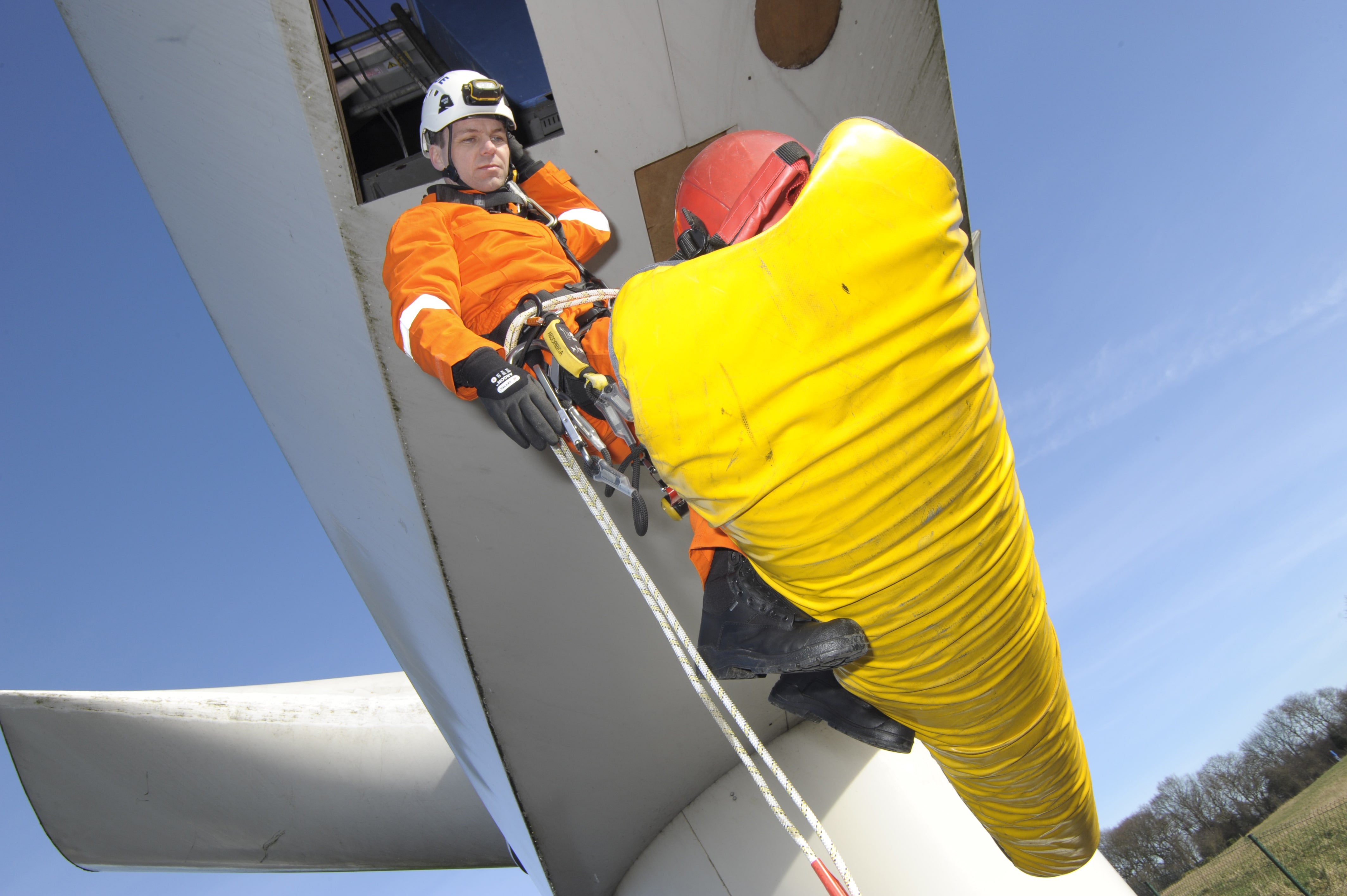What is a confined space?
It is a sad fact that even though confined space legislation was introduced a quarter of a century ago, tragically about a dozen people still lose their lives each year.
It's important to remember that the principles of keeping people safe remain the same regardless of sector, and the difference lies in how you keep them safe according to the industry they are working in.
According to the definition, a confined space must have both of the following defining features:
- it must be a space which is substantially (though not always entirely) enclosed, and;
- one or more of the specified risks must be present or reasonably foreseeable
Potential spaces in wind turbines that are substantially (though not always entirely) enclosed include (but not limited to):
- Basements
- Access towers
- Hubs
- Nacelles
- Yaw decks
- Blades
Specified risks in wind turbines that could be present or reasonably foreseeable include:
- Serious injury due to fires or explosions
- Loss of consciousness or asphyxiation due to
- Gases / fumes / vapours
- Oxygen deficiency
- Loss of consciousness due to excessive heat
- Drowning or asphyxiation due to free-flowing liquids / solids (e.g., from surrounding land in excavations)
Due to the general enclosed nature of the spaces within the wind turbine generator (WTG), it is foreseeable that any specified risk could easily migrate from one section to an adjacent or other section of the WTG.
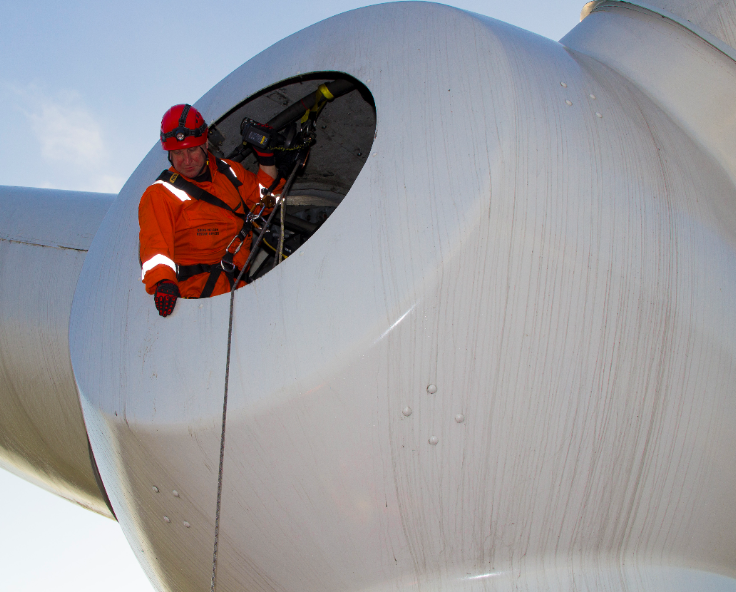
Wind industry risk assessments
Where a space has been identified as a confined space, the level of risk from entering that space should be determined prior to entry as part of the overall risk assessment.
A risk assessment must be carried out by a competent person i.e., someone with the necessary skills, knowledge and experience of, and familiarity with, the relevant processes, plant and equipment so that they understand the risks involved and can devise necessary precautions. A risk assessment will:
- identify whether a space is a confined space or will become a confined space because of the work to be carried out
- Identify measures to avoid entry
If it is not reasonably practicable to avoid entry, it is important to assess the risks connected with entering or working in the space. These include:
- the condition of the confined space
- hazards that arise directly from the work
- hazards from outside the space
Workers could be exposed to confined space risks throughout any of the phases of the life cycle of a wind turbine (construction, operation, maintenance and repairs, decommissioning).
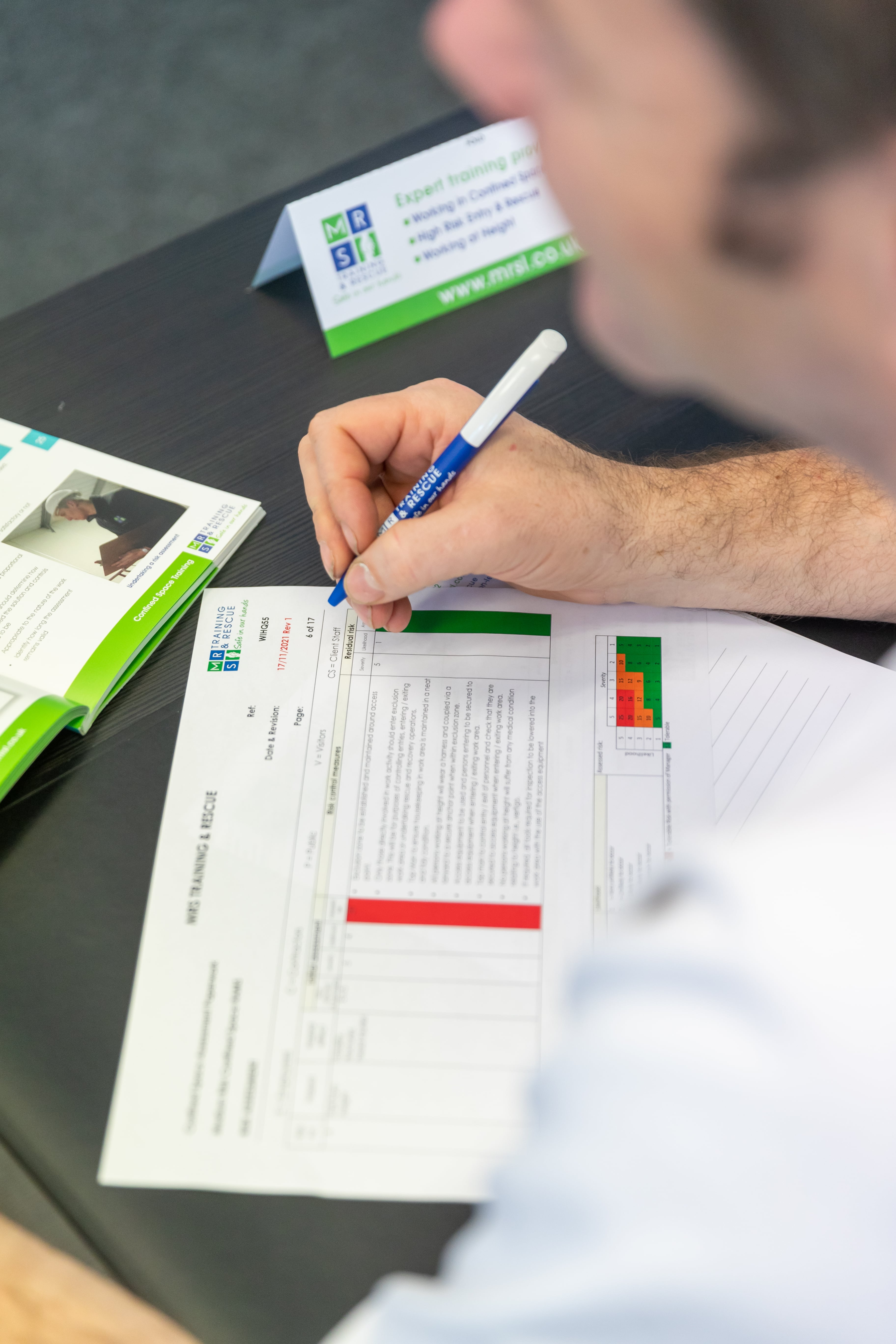
Confined space categorisation
It is good practice to categorise confined spaces (low, medium or high risk) and keep a register for identifying existing or potential confined spaces.
These classifications give managers a broad idea on the hazards associated with the confined space and the control measures to be taken (e.g., level of training).
Typical hazards associated with onshore wind turbines
These can be divided into two types which are:
- Existing (those that are present or stored whilst the WTG is in normal operation).
- Examples could be:
- In basements, oxygen deficiency and toxic gas from fire suppression systems e.g., carbon dioxide; or oxygen deficiency from oxidation of metals (rust, corrosion) or other materials
- In the nacelle - Fire risk from electrical / mechanical equipment
- Examples could be:
- Introduced (those brought into the WTG specifically for a particular task)
- Examples could be:
- Fire and explosion from hot works or toxic fumes / vapours from cleaning materials / paints, solvents etc used in the hub:
- Toxic fumes from use of resin for repairs in blades
- Examples could be:
There are many other examples in different parts of the wind turbine, and each should be considered and documented as part of the risk assessment process.
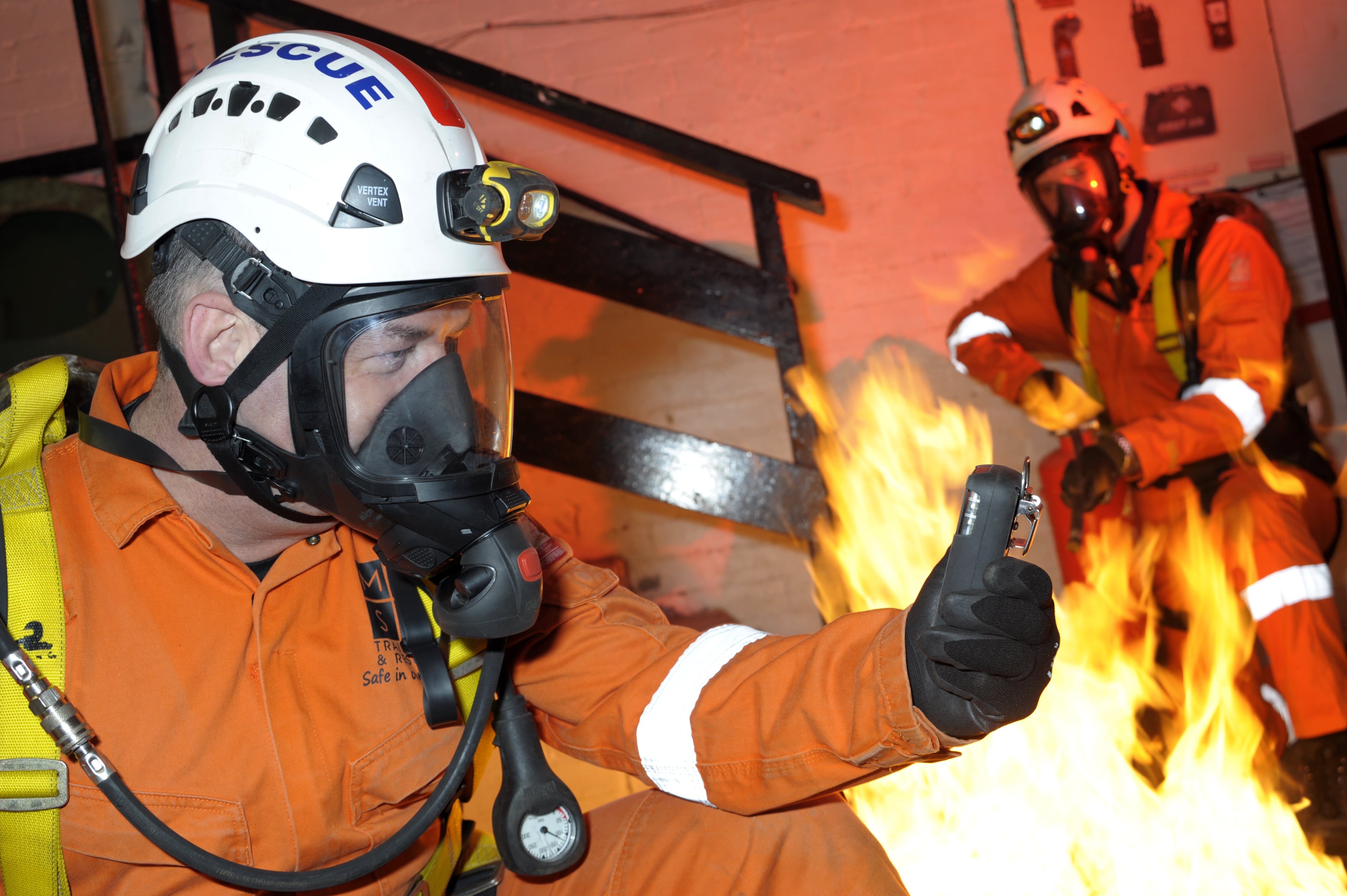
Safe system of work
Regulation 4 of The Confined Space Regulations 1997, states that where entry into a confined space can’t be avoided, then prior to entry a confined space task specific safe system of work (SSoW) must be used. Whilst the Wind Turbine Safety Rules are the prime SSoW for all works conducted on the Wind Turbine, an additional SSoW must also be developed for the confined space entry. This will:
- Eliminate the source of any danger
- Ensure necessary precautions are taken (control measures)
- It is also good practise to have a confined space permit to work
The safe system of work should consider all the 20 points listed in the Approved Code of Practice (ACOP), namely:
- Supervision
- Competence for confined spaces working
- Communications
- Testing/monitoring the atmosphere
- Gas purging
- Ventilation
- Removal of residues
- Isolation from gases, liquids and other flowing materials
- Isolation from mechanical and electrical equipment
- Selection and use of suitable equipment
- PPE and RPE
- Portable gas cylinders and internal combustion engines
- Gas supplied by pipes and hoses
- Access and egress
- Fire prevention
- Lighting
- Static electricity
- Smoking
- Emergencies and rescue
- Limited working time
Competence of entrants and those supervising and assisting entry
There are three key roles associated with the normal entry of a confined space:
- Confined space entrant
- Person monitoring/assisting entry (Safety Guardian)
- Supervisor
Persons who supervise work in confined spaces should be competent.
There are recognised occupational standards available for each role which are detailed in the table below, however no single recognised occupational standard covers all or a combination of the roles.
For the person entering and working in the wind turbine, there are also industry standard competency schemes which will provide the relevant level of basic training required to access wind turbines as prescribed by the site owner or operator.
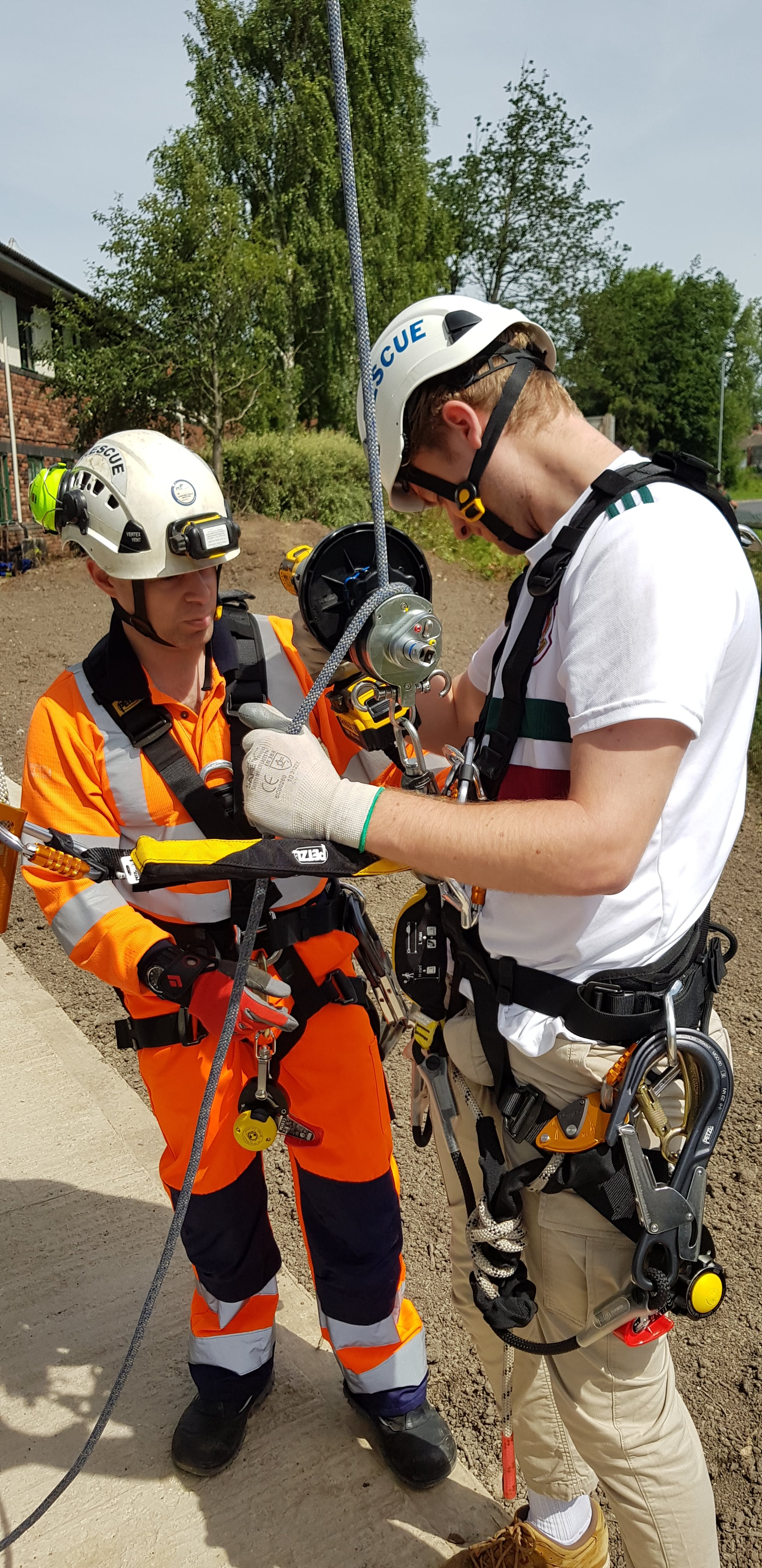
Emergency arrangements
Emergency arrangements are a specific requirement of Confined Spaces Regulations 1997 - Regulation 5 - Emergency arrangements. In accordance with these regulations and ACoP paragraph 147, you cannot reply on the emergency services.
Each confined space identified should have a rescue plan specific to that confined space and the task or activity being undertaken in it to be able to sustain any casualty at the scene and during the evacuation, to a place where the emergency services can take over.
There must be suitable arrangements for emergency rescue to be able to sustain any casualty at the scene and during the evacuation, to a place where the emergency services can take over.
Self-rescue involves an entrant leaving the space under their own capacity, either because they have identified a hazard (e.g. gas monitor alarm indicating a potentially dangerous condition) or are feeling ill. Equipment may be provided to enable self-escape from the confined space in an emergency. Examples of these include constant rate descenders for escape in a fire or escape breathing apparatus where the oxygen level is suddenly depleted or increased concentration of another gas situation.
Escape equipment may only be appropriate for use in situations where there will be time to react to an anticipated emergency and the entrant is conscious and not incapacitated in any way. Due to nature of the confined space and potential risks, self-rescue alone may not be sufficient, assisted rescue will also need to be considered.
Assisted rescue could require one or more people dedicated to the rescue role and rescue could be either undertaken by non-entry (external) rescue e.g., entrant is permanently attached to a recovery line, or will involve additional people entering the confined space to perform the rescue.
Some confined spaces on the turbine could have reduced horizontal and vertical space and restricted manoeuvrability (basement/transition piece, yaw section, transformer room or between canopy and generator of a Direct Drive WTG) which may require evacuation of an injured person from this area to a location were first aid can be administered.
All personnel on site should be competent to respond to emergency situations. Training needs will vary according to any designated role. There are recognised occupational standards available for confined space rescue personnel.
